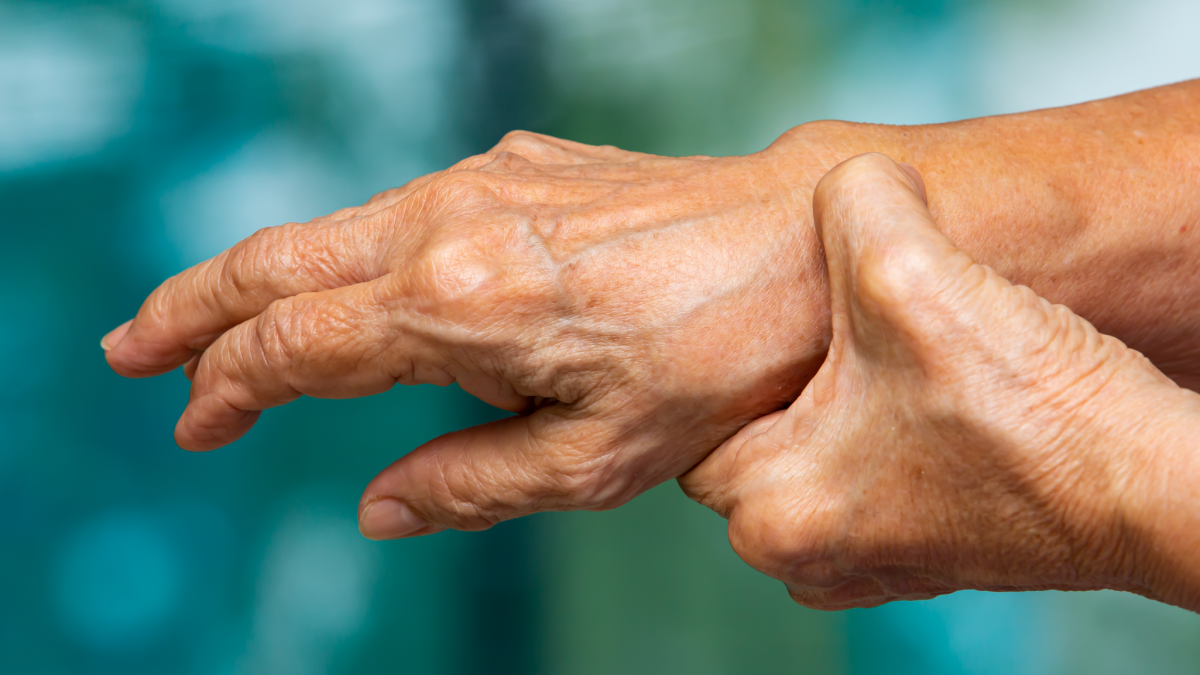Common Types of Arthritis Explained

Did you know there are over 100 conditions grouped under the umbrella term 'arthritis'? To find the best treatment and management strategies, it’s important to determine the type of arthritis you have.
Non-Inflammatory Arthritis
Non-inflammatory types of arthritis usually occur due to breakdown or damage to the different parts of the joint. Although we don't know the exact cause of this type of arthritis, there are some key risk factors including age, family history, obesity and repeated joint strain. Non-Inflammatory Arthritis is localised, which means it stays within the affected joint(s) and won’t spread around the body.
- Osteoarthritis (OA)
Osteoarthritis (OA) is the most common form of arthritis. It is a degenerative joint disease that occurs when the cartilage in your joints breaks down, causing your bones to rub together. This leads to inflammation of the tissue around the joint, damage to joint cartilage, the formation of bony spurs growing around the edge of a joint, and the deterioration of ligaments. OA can affect any joint but occurs most often in the knees, hips, finger joints and big toe, and generally appears in people aged over 40 years or those who have had previous damage to the joint or joint injuries.
Inflammatory Arthritis
Inflammatory arthritis describes a group of diseases caused by an overactive immune system. The immune system is the body’s self-defence system, and protects us from infections and illness. However, when someone has an auto-immune condition, the body’s immune system mistakenly attacks the body’s healthy cells and tissues, such as the joints, causing inflammation. This form of arthritis can spread around the body causing inflammation in other joints and organs.
- Rheumatoid arthritis
In cases of Rheumatoid arthritis (RA), when the inflammation goes down, the capsule around the synovium - connective tissue in the joint - remains stretched and is unable to hold the joint in its proper position. This can cause the joint to become unstable and move into unusual positions. Because of this, RA can cause permanent joint damage and deformity, especially in the first few years of the disease. It usually occurs within the smaller joints such as those in the hands and feet, and tends to affect the same joint on both sides of your body.
- Ankylosing spondylitis
Ankylosing spondylitis (AS) causes the body to produce extra calcium around the bones of the spine. This can make extra bits of bone grow that can cause stiffness, particularly in your back, ribcage, and neck. AS primarily affects the spine and pelvis but can also impact other joints in the body. Bone fusion may also occur, leading to spinal deformities and limitations in shoulder and hip function. AS often has a genetic component, with most affected individuals possessing the HLA-B27 gene.
- Gout
Gout is a painful type of arthritis caused by a build-up of uric acid crystals that form in and around the joints. We all have uric acid (also known as urate) in our blood, however, gout occurs in people who have higher levels than normal. Gout attacks are especially common in joints at the ends of your legs and arms, such as in your fingers and toes. They can happen suddenly, intensifying within a few hours and lasting for days to weeks. Over time, gout symptoms can become more severe if left untreated.
- Psoriatic arthritis
Psoriatic arthritis (PsA) mainly affects the skin and joints, causing rashes and pain. Some people may develop PsA before the psoriasis is even present. Psoriasis itself causes red, flaky skin covered with silvery patches. PsA can lead to swollen, sausage-like fingers and nail pitting. In some cases, the condition may progress to affect the spine, causing damage similar to ankylosing spondylitis.
Managing arthritis symptoms
In addition to pharmacological approaches, there are many non-pharmacological ways you can manage your symptoms. This may include therapies such as massage and hydrotherapy, adopting an anti-inflammatory diet, and relaxation techniques like meditation.
One easy thing you can incorporate into your management plan is exercise. You may not always feel like exercising if you have arthritis or may be worried that exercising will make your pain or your condition worse. However, exercise can improve major symptoms such as pain and swelling. There are many reasons for this, including:
- Strengthening your muscles to better support your joints
- Improving stiffness
- Improving and maintaining a wider range of movement
- Helping you maintain a healthy weight, as obesity can exacerbate symptoms
- Releasing feel-good chemicals called endorphins into the body
- Exercising regularly can improve sleep, which can help the body repair itself.
For more information about therapies that may help with managing arthritis, visit our Health & Wellness Group Classes page.
Sources:
- https://www.healthline.com/health/arthritis-types
- https://www.healthline.com/health/inflammatory-arthritis
- https://www.arthritis.org.au/arthritis/arthritis-insights/living-with-arthritis/non-inflammatory-and-inflammatory-arthritis/
- https://www.arthritis.org/health-wellness/healthy-living/managing-pain/understanding-pain/sources-of-arthritis-pain
- https://www.arthritis.org/health-wellness/about-arthritis/understanding-arthritis/what-is-arthritis
- https://www.versusarthritis.org/about-arthritis/conditions/arthritis/
Share this article

